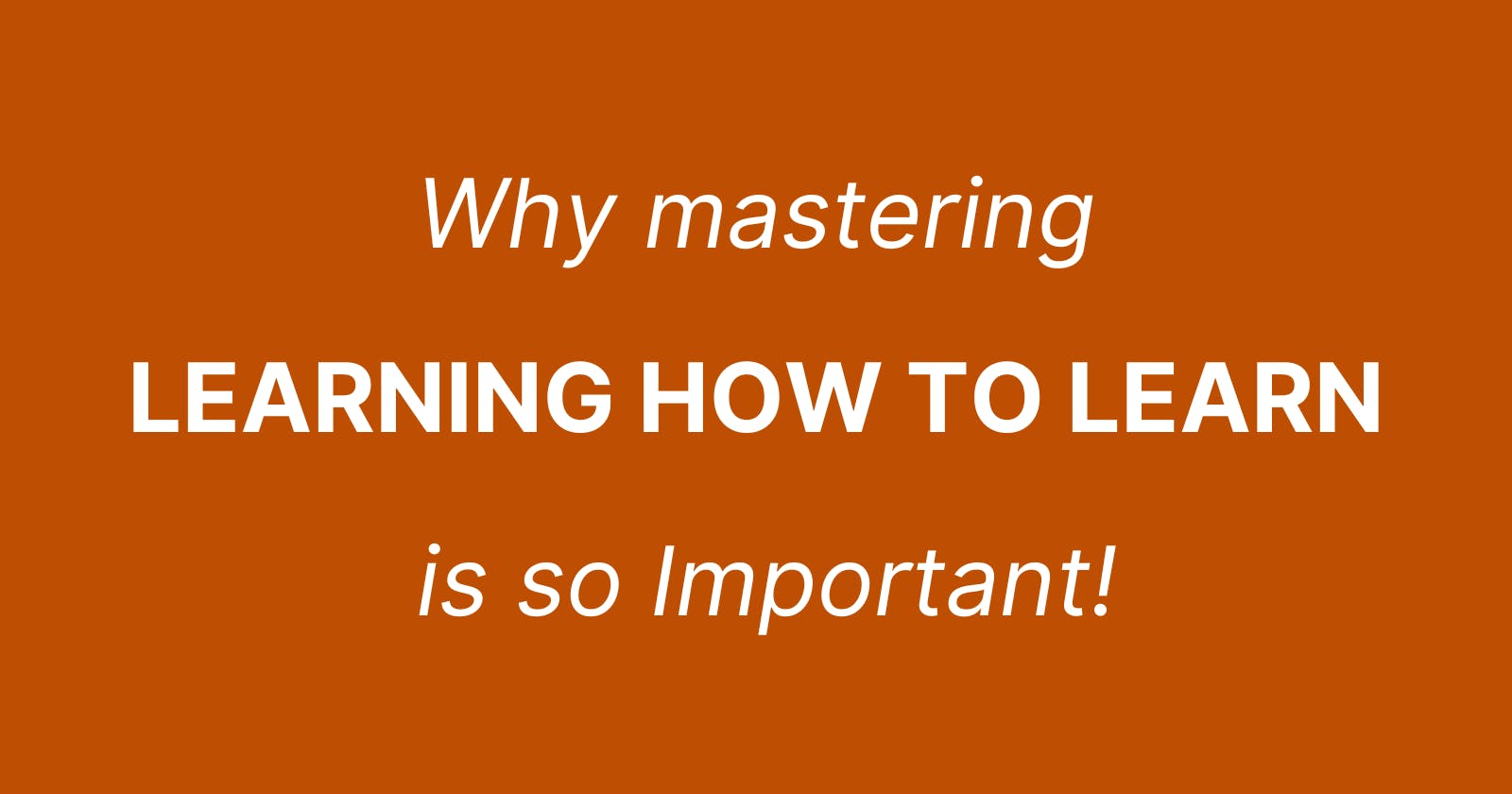How to build a bullet-proof study system while learning
If there's any skill that's worth mastering, it's learning how to learn.
No matter what your skill levels are in topics you would like to master, you can change your thinking and change your life. If you’re already an expert, this peep under the mental hood will give you ideas for turbocharging successful learning, including counter-intuitive test-taking tips and insights that will help you make the best use of your time on homework and problem sets. If you’re struggling, you’ll see a structured treasure trove of practical techniques that walk you through what you need to do to get on track. If you’ve ever wanted to become better at anything, read the following article, it will help serve as your guide.
Introduction
I decided to take some time to try to understand how we learn. When I saw an online course dealing with that, I decided to sign up, and after seeing the four weeks of course material, I can say that it was one of the best decisions I’ve made.
After all, once you figure out the most effective way to learn, you can transfer this knowledge to any subject of your choice.
“If you want to learn web development, you should first learn how to learn”
Two experienced instructors teach this course: Barbara Oakley, Professor of Engineering at Oakland University, and Dr. Terrence Sejnowski, Francis Crick Professor at the Salk Institute for Biological Studies.
Here is my in-depth review of the course, with some tips and tricks to help anyone who's thinking about learning web development or any subject effectively.

One of the first things that caught my eye about the course is that over 3 million people worldwide have already enrolled.
So evidently it must be offering a lot of value…
How did I get to know this amazing course?
I am a self-taught Software Engineer, and lately, I was getting worried about having less time to learn in a shorter amount of time most effectively, because I have to stay tuned with my career. One day, I came across 100Devs Free Sofware Engineering Bootcamp created by Leon Noel, by listening to a podcast from Code Newby called ‘Where you can find quality live coding instruction online’, where Leon speaks about coding to pay the bills, helping underprivileged communities get into tech, and then creating the live online education and community space he wanted to see in the world, called 100Devs.
Leon is an amazing Teacher, and I am extremely impressed with what he is sharing. His boot camp starts in January, but you can still join anytime! You can follow everything on this page and then join the #catchup-crew on our Discord! All past classes can be found here and all the materials can be found in the #follow-along-materials channel on Discord! I am very impressed with the innovative way he is teaching how to code to hundreds of people from all over the world.
Who is this course for?
Someone who is:
Studying programming or any subject, no matter what
Desiring to learn more effectively and efficiently
Interesting in learning using spaced repetition and active recall
Inquiring about the brain and sleep
How to avoid procrastination
What can you expect upon enrolling?
Coursera’s Learning How to Learn It’s taught in a simple and easy-to-understand manner. The concepts are applicable immediately. Even throughout the course, as you learn something in part 1, it resurfaces in parts 2, 3, and 4, always reinforcing the new information.
You have four weeks to learn everything in this course before you may pass it.
They are:
Week 1 — What is Learning?
Week 2— Chunking
Week 3 — Procrastination and Memory
Week 4 — Renaissance Learning and Unlocking Your Potential
The instructors, Dr. Terrence Sejnowski and Barbara Oakley will teach you the primary topic of the week as well as some learning strategies each week.
The Brain's Two Working Modes
Our brain works in two states:
In the focused state, a thought "activates" a certain region, activating a series of connected ideas. It is the path already traveled, that we already know well, like the steps of a recipe we have already made dozens of times. When we sit down and concentrate on something, this is the mode our brain enters, trying to find the memories connected to the problem before us.
For example, Focused thinking involves working on a singular task. like, reading this post. You’re devoting concentration to figuring out what the text on the screen means.
The other mode, the diffuse mode, is a mode of exploration. It's like a search in which we're not sure what we're looking for, and so we're searching and looking in all directions until we find something that feels right. This is the mode when we let our mind "wander" when we are thinking about life under the shower or running while admiring the landscape around us.
For example, Diffused thinking happens when you’re not focused on anything. You’ve experienced this on a walk through nature or when you’re laying in bed about to go to sleep. No thoughts but at the same time, plenty of ideas.
“Learning happens at the crossover of these two kinds of thinking & The Need for Time to Build Neural Networks”
The important thing is this: these two modes do not work at the same time. And, more: we often need these two modes to solve complex problems. When you are faced with something new, it is not enough to remember what you already know, it is also necessary to find new connections. This is why it is so common that after hours of trying to solve a problem, the solution comes to us, while we are taking a shower or after we turn off the bedside lights and close our eyes.
For example,e You focus on something for some time and then take a break and let your thoughts diffuse.
To solve complex problems we need time
Another result is: to solve complex problems we need time so that our mind can switch between these modes while searching for a solution. Hanging out with friends, exercising, or taking a shower can be as important steps in solving a problem as the hours we spend dwelling on it.
Before I mentioned that in the focused mode the brain searches for the answer in well-defined areas, like a well-known path. But how do we form these areas of knowledge?
By practicing. Practice forms and makes these areas stronger, and the stronger these sets of memories, the more we will remember this knowledge in the future.
But here it might be interesting to compare the brain to the muscles in our body: an athlete can't practice 20 hours a day before a championship if he wants to build muscles. Not only because of physical exhaustion but because muscles need time: the resting time between one workout and another is as essential for strengthening muscles as the workout itself.
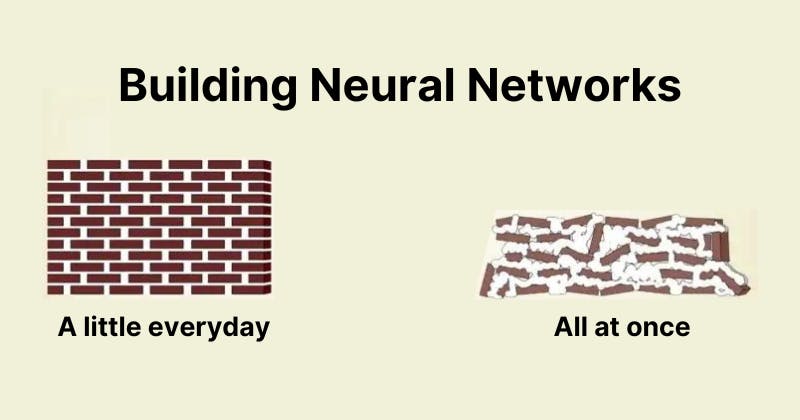
The same is true for the brain: if a particular test requires, say, 10 hours of study, studying 10 hours the day before the test is insufficient - this usually results in a neural network, like the brick wall above, that will fall apart as soon as the test is handed in.
Hence the importance not only of repetition but especially of spaced repetition (pay attention to this, this is probably one of the most important topics I learned): 1 hour of study one day, another hour the next day, then a 48h break before studying another 1 hour... So that the wall is built.
In other words, there is plenty of scientific evidence that studying for hours and hours one day is NOT effective! If there is one thing you will remember from this article, try to remember this!
Part 1 — What is learning?
Focused and Diffused thinking
How do you answer such a question? What is learning?
As referenced above the course breaks it down with the combination of two kinds of thinking, focused & diffused.
Focused thinking involves working on a singular task. For example, reading this post. You’re devoting concentration to figuring out what the words on the screen mean.
Diffused thinking happens when you’re not focused on anything. You’ve probably experienced this on a walk through nature or when you’re laying in bed about to go to sleep. No thoughts but at the same time, plenty of ideas.
Learning happens at the crossover of these two kinds of thinking.
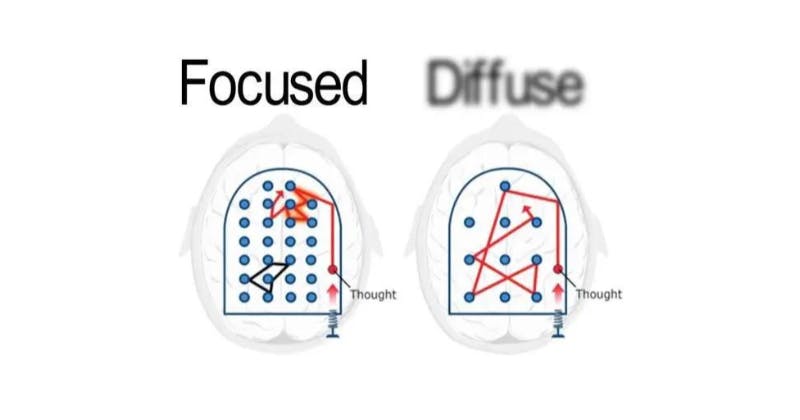
You focus on something intently for some time and then take a break and let your thoughts diffuse.
How often have you been stuck on a problem and then thought of an answer in the shower or just while during a walk?
This is an example of the two kinds of thinking at work. It doesn’t always happen consciously either.
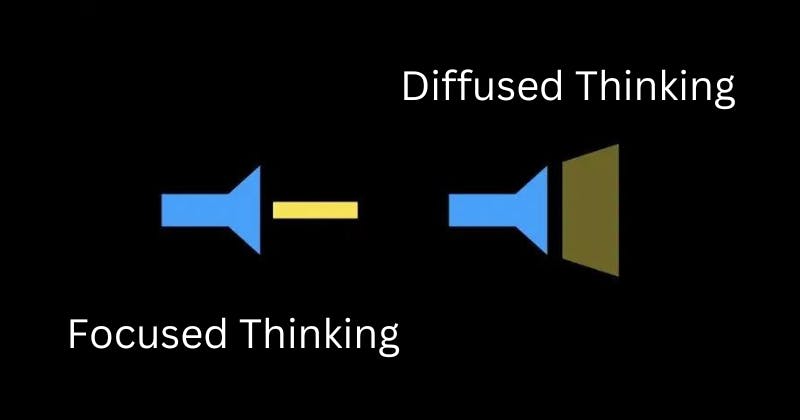
If the brain was a flashlight, focused thinking would be a single intense beam of light. And diffused thinking would be a wider but less intense beam.
Have you ever not known what step to take next on an assignment, left it overnight, come back, and saw the solution immediately?
If you want to learn something, it’s important to take advantage of the two kinds of thinking. Combine intense periods of focus with intense periods of nothing.
After studying, take a walk, have a nap, or sit around and do nothing. And don’t feel bad about it. You’re giving yourself the best opportunity to let the diffused mind do its thing.
Procrastination and how to combat it
You’re working on a problem. You reach a difficult point. It’s uncomfortable to keep going so you start to feel unhappy. To fix this feeling, you seek something pleasurable.
You open another tab, Facebook. You see the red notifications and click them. It feels good to have someone connecting with you.
A bit more scrolling. Some advertisements for new shoes. The same ones you saw yesterday. They look cool, black & white. ‘I’m going to order them,’ you think.
You look down at your notes!
You look at your Todo List!
You forget where you were up to!
What the hell just happened?
You were working on a problem. And you reached a difficult point. It was uncomfortable and you started to feel unhappy. You sought out something pleasurable. It worked. But only temporarily. Now you’re back to where you were and you’re even more upset at the fact you got distracted.
So how do you fix it?
The course suggests using the Pomodoro technique. It’s simple!
You set a timer and do nothing except what you wanted to work on for the duration. Even if it gets difficult, you keep working on it until the timer is done.
There is something called the Pomodoro Timer!
A typical Pomodoro timer is 25 minutes with a 5-minute break afterward. During the break, you can do whatever you want before starting another 25-minute session.
But you can use any combination of studying/working & break time.
To finish this course, for example, I used 50 minutes of Pomodoro clocks with a 10-minute break between.
After two Pomodoros I had a more extended break of 40 minutes to go for a walk or do something at home.
Here is a great tool that I recommend using. It's called Pomodoro Tracker

Here is a breakdown of my typical 4 Pomodoros half-day study chunk:
50-minutes studying.
10-minute break.
50-minutes studying.
40-minute break.
50-minutes studying.
10-minute break.
50-minutes studying.
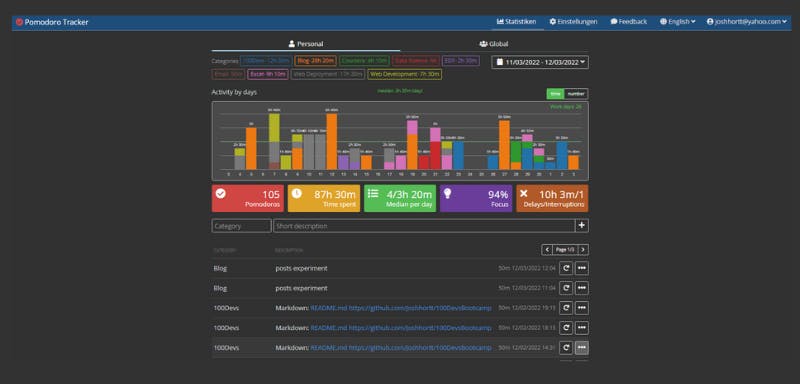
After 4 hours I take a Longer Break for a meal, go for exercise, Shopping, or do something else that is enjoyable.
I Recommend!
Start with 25 minutes and work your way up if 50 minutes is too lengthy.
What is the benefit of doing this?
Because you can’t control whether or not you solve every problem which arises before the end of a day's work, but you can control how much time and effort you put in. You need a starting point and an ending point.
You can manage four hours of intense work each day.
But you can’t control solving every assignment question in a day.
Sleep your way to better learning
We’ve talked about focused and diffused thinking. Sleep is perhaps the best way to engage unconscious diffused thinking.
Being in focused mode is to brain cells what lifting weights are to muscles. You’re breaking them down.
Sleep provides an opportunity for them to be repaired and for new connections to be formed.
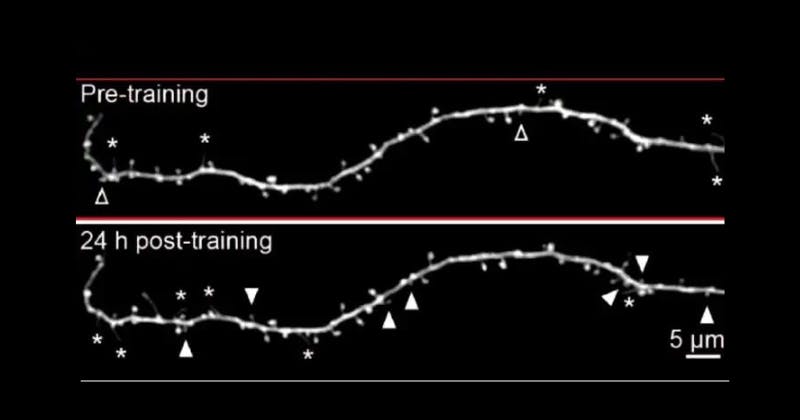
Dr. Terrence Sejnowski talks about how new synapses (connections) are formed on the dendrites during sleep.
Think about it, there’s a reason famous thinkers like Einstein and Dali and others would sleep for 10 hours at a time and tap multiple naps a day.
They knew it was vital for their brain to clear out toxins built up during the day which prevented engaging the focused mind.
The next time you feel like pulling an all-nighter and studying, you’d probably be better off getting a good night's sleep and resuming the next day.
Spaced repetition, a little everyday
I write quotes every day. Every day that I write a quote I found or heard of, I write it on my Notion Calendar. When I look at it every day, I see a chain of Quotes everywhere, without missing a day. This technique keeps me reflecting on something and writing about it in terms of a quote. Many of these quotes are just meaningful sentences I came up with, but this technique is not only good for writing quotes. It can be used for learning too.
All I have to do now is keep the chain going.
My message here is: "Don't break the chain."
In the Learning How to Learn course, they refer to a similar concept called spaced repetition.
Spaced repetition involves practicing something in small timeframes and as you get better at it, increasing the amount of time between each timeframe.
For example, if you're just starting with learning a programming language, you could practice a single code snippet every day for a week until you're comfortable. After the first week, you do it twice a week. Then every two months. After that, every 3 months. It will eventually become ingrained in your mind.
When these two concepts are combined, the best learning occurs. Break the chain by practicing a little every day and incorporating spaced repetition by going over difficult material more frequently.
A great tool for spaced repetition is flashcard software Anki.
The best learning happens when you combine these two concepts. Don’t break the chain by practicing a little every day and incorporate spaced repetition by going over the difficult stuff more often.
To begin with, you could set yourself a goal of one Pomodoro a day on a given topic. After a week, you would’ve spent 3 hours on it. And after a year, you’ll have amassed around 150 hours. Not bad for only 25 minutes per day.
Part 2 — Chunking
Multiple neurons firing together
Chunking is the process of calling upon these regions in a way that they work together.
Why is this helpful?
Because when multiple chunks of neurons fire together, the brain can work more efficiently.
How do you form a chunk?
A chunk is formed by first grasping an understanding of a major concept and then figuring out where to use it.
If you were starting to learn to program, it would be unwise to try and learn an entire language by heart. Instead, you might start with a single concept, let’s say loops. You don’t need to understand the language inside and out to know where to use loops. Instead, when you come across a problem that requires a loop, you can call upon the loops chunk in your brain and fill in the other pieces of the puzzle as you need.
Deliberate practice: Forming a chunk is hard.
First of all, what are the important concepts to learn?
Second, where should you apply them?
This is exactly why you should spend time and effort trying to create them. Instead of learning every intricate detail, seek out what the major concepts are. Figure out how to apply them by testing yourself. Work through example problems.
The process of doing the hard thing is called deliberate practice. Spending more time on the things you find more difficult is how an average mind becomes a great mind.
Einstellung — don’t be held back by old thoughts
Dr. Barbara Oakley introduces Einstellung as a German word for mindset.
But the meaning is deeper than a single-word translation.
Every year you upgrade your smartphone’s software. A whole set of new features arrive along with several performance improvements.
When was the last time your way of thinking had a software upgrade?
Einstellung’s deeper meaning describes an older way of thinking holding back a newer, better way of thinking.
The danger of becoming an expert in something is losing the ability to think like an amateur. You get so good at the way that’s always worked, you become blind to new things
If you’re learning something new, especially if it’s the first time in a while, it’s important to be mindful of Einstellung. Have an open mind and don’t be afraid of asking stupid questions.
“After all, the only stupid question is the one that doesn’t get asked”
Recall — what did you just learn?
Think about it! Out of what you’ve read so far, what has stood out the most?
Don’t scroll back up. Put the article down and think for a second.
How would you describe it to someone else?
It doesn’t have to be perfect, do it in your own words.
Doing this is called recall. Bringing the information you’ve just learned back to your mind without looking back at it.
You can do it with any topic. Reading a book? When you’re finished, put it down and describe your favorite parts in a few sentences.
Just Reflect!
Finished an online course? Write an article about your favorite topics without going back through the course. Sound familiar?
Practicing recall is valuable because it avoids the illusion of competence. Rereading the same thing over and over again can give you an illusion of understanding it. But recalling it and reproducing the information in your own words is a way to figure out which parts you know and which parts you don’t.
Just Remember what professional Sports Athletes do. They practice & Recall over and over again till it’s ingrained.
Part 3 — Procrastination & Memory
The Zombie Habit
How hard do you have to think about making coffee in the morning at your house?
Not very much. So little, your half-asleep zombie mode body can fumble around in the kitchen with boiling water and still manage to not get burned.
How do you do it?
Because you’ve done it enough, it became a zombie habit. It’s the same with getting dressed or brushing your teeth. These are things you can do on autopilot.
Where do habits come into learning?
The thing about habits is that almost anything can be turned into a habit. Including procrastination.
Above we talked about combating procrastination with a timer. But how do you approach it from a habit standpoint?
Learning How to Learn course breaks habits into 4 parts.
The cue — an event that triggers the next three steps. We’ll use the example of your phone going off.
The routine — what happens when you’re triggered by the cue. In the phone example, you check your phone.
The reward — the good feeling you get for following the routine. Checking your phone, you see a message from a friend, this feels good.
The belief — the thoughts which reinforce the habit.
You realize you checked your phone, and now you think to yourself, ‘I’m a person who easily gets distracted.’
If you only remove one of the four steps, the rest to crumble.
Can you figure out what it is?
The Cue
What would happen if your phone was in another room? Or turned off?
The cue would never happen, and neither would the subsequent steps.
The technique of removing the cue doesn’t only work for procrastination. It can work for other habits too. It also works in reverse. If you want to create a good habit. Consider always the four steps.
To make a good habit, create a cue, make a routine around it, and reward yourself if you follow through and you’ll start forming a belief about you being the type of person who has the good habit.
The example is given above about writing a quote every day. All 4 steps are interiorized about this habit, in my point of view.
The dictionary isn’t the only place product comes after a process
Thinking about the outcome of your learning is the quickest way to get discouraged about it.
Why is that so?
Because there is no end. Learning is a lifelong journey.
Only a minority of people said, ‘I’ve learned enough.’
And if they have, they were probably lying.
I’ve been speaking Portuguese and English since I was young. Even after so many years of speaking these two languages, I still make mistakes, daily. But would I get upset at where my level of English is helpful? Of course not.
If great Sports Athletes make repeatedly many mistakes, even after practicing the same technique over and over.
What could I do then?
I could accept that knowing everything about speech and the English language is impossible. And instead, focus on the process of speaking.
This principle can be related to anything you’re trying to learn or create.
If you want to get better at writing, the end product could be a bestselling book. But if I told you to go and write a bestselling book, what would you write?
Worrying about what a bestselling book would have in it would consume you.
It’s far more useful to focus on the process, to write something every day.
Free up your working memory and set a task list the night before
Dr. Oakley says we’ve got space for about four things in working memory. But if you’re like me, it’s probably closer to one.
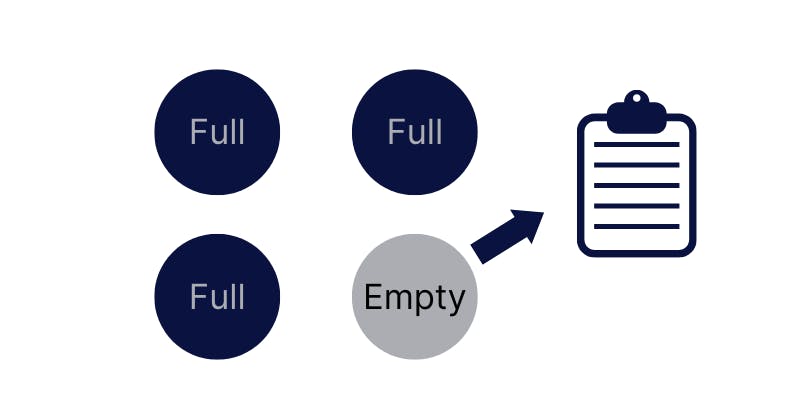
Writing a task down free’s up a slot in your working memory.
Some of the people I work with have three monitors with things happening on all of them, I’m not sure how they do it. I stick to one and push it to two when a task requires it.
Every morning, I write down a list of half a dozen or so things I want to get done during the day on my Notion Task List. Sometimes I write the same list on the A4 Document in my home office to clear out my brain.
Even when I’m in the middle of a focused session, 12 minutes into a Pomodoro, things still come out of nowhere. Rather than stop Pomodoro, the thought gets trapped on the paper. Working memory freed up.
The course recommends creating a list of things the night before but I’m a fan of first thing in the morning as well while drinking my black coffee. Putting things down means they’re out of your head and you can devote all of your brainpower to focused thinking rather than worrying about what it was you had to do later.
Don’t forget to add a finishing time. The time of day you’ll call it quits.
Why you might ask?
Because having a cutoff time means you’ve got a set timeframe to complete the tasks. A set timeframe creates another reason to avoid procrastination. Even if it is a long-term project you've been working on. Just set a timeframe.
And having a cutoff time for focused work means you’ll be giving your brain time to switch to diffused thinking. Who knows. That problem you couldn’t solve at 10 o’clock may solve itself whilst you’re in the shower at 10:15.
Part 4 — Renaissance learning & unlocking your potential
Learning doesn’t happen in a straight line
You could study all weekend and go back to work on Monday and no one would know.
You could work on a problem all week and by the end of the week feel like you’re worse off than when you started.
Dr. Sejnowski knows this. And emphasizes learning doesn’t happen linearly.
Learning tough skills doesn’t happen over days or weeks or months. Years is the right timeframe for most things.
Just for curiosity a few months ago, I wanted to know how quickly I could learn all of the Data science concepts: calculus, linear algebra, probability, statistics, machine learning, and so on. I found a question on Reddit about it.
A person who had been studying machine learning for years replied with, ‘Decades.’ And then explained how he was still discovering new things.
This was just an example of what many folks do every single day on the internet.
Looking for Answers, A easy way, or the holy grail of achieving. Being impatient. Just focusing on the product rather than the process.
Learning looks more like a broken staircase than a straight line.

Sometimes you’ll go in circles, other times it’ll feel like you’re in decline, then somehow you’ll start heading in the right direction (at least it seems that way).
Geniuses were mostly college dropouts
How did Charles Darwin go from a medical school dropout to discovering the theory of evolution?
Most of you would answer because he was Charles Darwin.
But what if you’re not Charles Darwin?
Do not worry, not everyone is Charles Darwin.
There will never be another Charles Darwin. History repeats, but never perfectly. It’s better to think of it as a rhyme. History rhymes with the future.
Charles Darwin dropped out of medical school much to the disappointment of his family of physicians. He then traveled the world as a naturist.
Years went on but one thing never changed, he kept looking at things in nature with a child-like mind.
He’d take walks multiple times per day in between periods of study. Focused mind and diffused mind.
Darwin regularly walked along a Wood path next to his house for the exercise of body and mind.
He called it the “Thinking Path”!
Take any introduction to biology course and you’ll know what happened next.
I tried to condense a story of decades into sentences but the point is everyone has to start somewhere.
The first year you learn something new you suck. You start to think after putting in so many hours of study, you still don’t know anything yet, or you feel the Impostor syndrome. In the second year, you suck even more because you realize how much you don’t know compared to others.
There’s no need to envy those who seem to know what they’re doing. Every genius starts somewhere.
“He who says he can and he who says he can’t are usually right”
If you believe you can’t learn something, you’re right.
If you believe you can learn something, you’re also right.
Dr. Oakley was a linguist during her twenties. She didn’t like math. So how did she become an engineering professor?
By changing her belief in what she could learn.
I used to tell myself many times, especially after rumbling around fixing a bug on the application I was working on. ‘I’ll never be a good engineer.’
I said it to someone on a Discord channel once. They replied, ‘not with that attitude.’ This a simple yet profound statement. All the best ones are.
Whatever it is you decide to learn, it all starts with the story you tell yourself. Pretend you’re the hero in the story of your learning journey. Challenges will arise. It’s inevitable. But how does the hero deal with them? You decide!
The Value of Teamwork
Sometimes you can blindly believe you've got everything nailed down intellectually, but you haven't. This is the kind of thing that can leave you in shock when you discover you've flunked the test you thought you aced.
By making it a point to do some of your studying with friends, you can more easily catch where your thinking has gone astray.
Friends and teammates can serve as a sort of ever questioning larger scale diffuse mode outside your brain that can catch what you missed, or what you just can't see.
And of course, explaining to friends helps build your understanding.
The importance of working with others doesn't just relate to learning. It's also important in career building.
A single small tip from a teammate to take a course from the outstanding Professor Passionate, or to check out a new job opening, can make an extraordinary difference in how your life unfolds.
A word of warning, however.
Study groups can be powerfully effective for learning, but if study sessions turn into socializing occasions, all bets are off. Keep small talk to a minimum, and get your group on track. And finish your work. If you find that your group meetings start five to 15 minutes late, members haven't read the material, and the conversation consistently veers off-topic, you're best off finding another group.
Always make a Test Checklist
I’ve mentioned it before, but it's worth repeating. Testing is itself an extraordinarily powerful learning experience. This means that the effort you put into test-taking, including the preliminary mini-test of your recall and your ability to problem-solve during your preparation is of fundamental importance.
If you compare how much you learn by spending one-hour studying versus one hour taking a test on that same material, you'll retain and learn far more as a result of the hour you spent taking a test.
Frequent testing is one of the most efficient ways to learn and engrave something in memory. It is necessary to learn how to handle it, to practice actively, and not merely passively (i.e. just reading something).
Testing, it seems has a wonderful way of concentrating the mind. Virtually, everything we've talked about in this course has been designed to help make the testing process seem straightforward and natural, simply an extension of the normal procedures you use to learn the material.
So, it's time now to cut directly to one of the final features of this amazing course, a checklist you can use to see whether your preparation for test-taking is on target. This checklist was developed by legendary educator, Richard Felder. Although it was originally developed for engineers, it's suitable for many disciplines.
The Checklist
Did you make a serious effort to understand the text?
Did you work with classmates on homework problems?
Did you attempt to outline each homework question before discussing it with classmates?
Did you participate actively in homework group discussions?
Did you consult with the instructor/teaching assistants when you were having trouble?
Did you understand all of your homework problem solutions before the assignment was handed in?
Did you ask in class for explanations of homework problems that were unclear to you?
If you had a study guide, did you carefully go through it before the test, and did you understand all of the material?
Did you attempt to outline lots of problem solutions quickly without spending time doing the algebra?
Did you go over the study guide and problems with classmates and quiz one another?
If there was a review session, did you attend & ask questions about any concepts or ideas that you were unsure of?
Did you get a reasonable night’s sleep before the test?
Conclusion
Learning: the ultimate meta-skill
Taking responsibility for your learning is one of the most important undertakings you can manage.
Learning is the ultimate meta-skill as it can be applied to any other skill. So if you want to improve your ability to do anything, learning how to learn is something you should dedicate time to.
The things I’ve mentioned in this article are only scratching the surface of what’s available in the Learning How to Learn course itself.
If you want to dig deeper, I highly recommend checking out the full Learning How to Learn course. I didn’t pay for the certificate, I went through the audit track. You can access all the materials for free. However, I find that I would get much more out of the course If I went through the paid track. And the information in this course is worth paying for. But like I said You don’t need to.
"Children have a lesson adults should learn, to not be ashamed of failing, but to get up and try again. Most of us adults are so afraid, so cautious, so 'safe,' and therefore so shrinking and rigid and afraid that it is why so many humans fail. Most middle-aged adults have resigned themselves to failure." ― Malcolm X
Always Keep learning!

